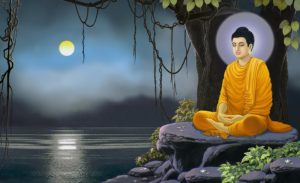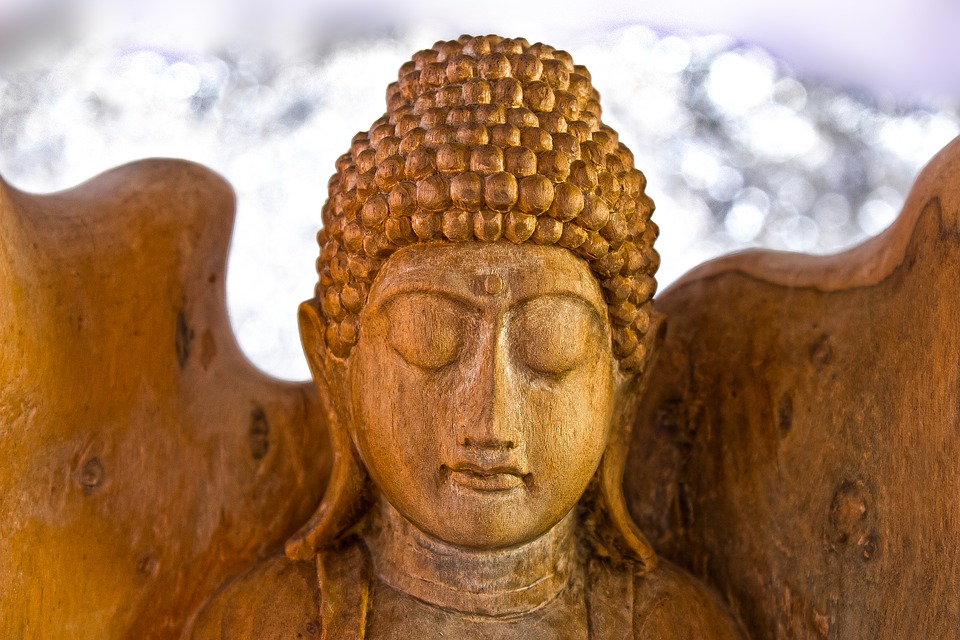Zen koan: Case of polishing the brick
A novice monk was meditating in a field when the master walked up to him. Saying nothing, the master sat down and of all things, started to then polish a brick, with what looked like a cloth, and some type of a liquid.
The student had his eyes closed, but curious as to what was really happening, opened them ever so slightly, to try to check on what his master was actually doing.
 The student also said nothing, but his meditation session was completely wasted or lost on him now, as his mind continuously thought about what the master was doing, and what possible lesson it was that he was trying to show or impart to himself, the new student, here at this highly respected school of Zen learning.
The student also said nothing, but his meditation session was completely wasted or lost on him now, as his mind continuously thought about what the master was doing, and what possible lesson it was that he was trying to show or impart to himself, the new student, here at this highly respected school of Zen learning.
Every day for the following week, the master would accompany his student, while the student meditated. Each day the master went on polishing his brick. One day he would wash and polish it with a cloth, the following day, he would grind at it with another stone. This grinding noise disturbed the student even more.
This unknown master was really a Zen master of unpolished quality.
No real master is only polished on the surface for the show, nor are they polished within. A real master is a polish, that polishes away, the dirt and dust covering over the mirror of his student. Even this is but the first step though, the second step is usually to smash the mirror. This achieves the dramatic outer shattering of the outer ego and allows a connection to the inner truth or soul of the student to be made.
This usually involves the command being made to the student to drop his own mirror or to drop his mind.
Only when a student does this, can he begin to see some of the real light that is behind and also in front of and really everywhere else except for where the mirror was being held within its artificial and false existence.
The master here was trying to show his student that polishing the brick on its surface only is the same as over polishing the actual technique of meditation, rather than actually, actually meditating.
 Enlightenment is not something to be attained, by struggling or making an effort to refine what we think might be its vehicle. No, meditation simply clears away what is preventing us from being our already enlightened self already. We are all enlightened unconsciously, the whole journey is about coming to the conscious recognition of this one great truth.
Enlightenment is not something to be attained, by struggling or making an effort to refine what we think might be its vehicle. No, meditation simply clears away what is preventing us from being our already enlightened self already. We are all enlightened unconsciously, the whole journey is about coming to the conscious recognition of this one great truth.
The essence is the brick itself, and not its outer surface, which is only as nonpenetrative, as is the mind that is full of thoughts. Polishing a thought with another thought never works, unless we can establish a reservoir of nonthought to reflect the truths off, and so see an aspect of thought, that is not being contained within that original thought at all.
All of this teaching is about reaching the energy of love, and of not thinking that the energy of love comes from anywhere else. All is love, and the master is showing his student here that the brick, when loved, can even be polished, but then it will reflect the master’s truth rather than the student’s, and who should always be only ever finding, and then owning their own individualized truths.
Only by finding our own truths can we see that these truths of ours connect us to the greater oneness of all truth. Only our own truth can do this for us.
We are not copies or reflections of anything else, and we need to be only ourselves, and to own our own truths by living them from the very love that contains them.
Of course, a polished brick still makes for a rather poor mirror, and the other aspect of this Zen tale is that no matter how hard we polish the brick, it will always remain a rather poor mirror and not the real thing. This is its nature, a brick is not meant to be a mirror.
Similarly to this, we cannot polish our own mind to become an expert at meditating.
We are then only working on the brick instead of on the more real aspect of ourselves. Our mind is our servant, and as such, it is only ever a tool. Too much refining of the tool, defeats its real use, and it then becomes an ornament of itself, and so it loses some of its effectiveness then.
This is like the marksman who over-carves his bow, and so weakens it. This means that while it outwardly looks very good, its worthiness for its real use, has been lessened.
We must work on what it is best and necessary for us to work on, and this is in living from our own truths, by being the part of God that we have been best created to be.
Sitting in the meditation of itself is likened here unto polishing a brick.
Real progress is only obtained by reaching past the surface reflections of our mind, not just trying to see them more clearly. A reflection of the truth always remains, just that, a reflection. Enlightenment is about living a real-life, and not living from its shadow.
 True meditation does not concern the mind. It uses the mind to go past itself and to stand aside, as we slip deeper into our real self, that is beyond our minds, and which is the reality of God’s oneness living within us, being us. This involves dropping the mind, from the point of view of obtaining understanding from the mind, and instead of reaching into the inner wisdom pools of God and making these truths of God’s oneness ours from experiencing them within real life.
True meditation does not concern the mind. It uses the mind to go past itself and to stand aside, as we slip deeper into our real self, that is beyond our minds, and which is the reality of God’s oneness living within us, being us. This involves dropping the mind, from the point of view of obtaining understanding from the mind, and instead of reaching into the inner wisdom pools of God and making these truths of God’s oneness ours from experiencing them within real life.
Matching knowledge with understanding and then comparing this with the real truths as we bring them out of ourselves, or from out of the unconsciousness of God’s love, to create a consciousness of them that exists then as wisdom, is what it is really all about.
It is the energy of love that creates consciousness as a field around unconsciousness.
This field of conscious recognition arises in a similar fashion as which a magnetic field arising around moving electricity does so.
In this case, it is moving love that creates the field of consciousness. This is why we must allow love to flow through us, and not dam it up inside of us. We are not bricks to be polished, but moving waters of love.
It is far better to see our reflection against the surface of this love, which represents our soul sitting in God, than from our own mind, which is only likened unto a brick, and which includes all of our passing lower bodies. Our physical body, our emotional body, our mental body, even our etheric or intuitional bodies, are all only time-based constructions, and never permanent like our soul is.
The brick is not permanent either, polishing the non-permanent never works. We must reach past the time-based illusions to grasp the greater unchanging realities of God. We make these real by allowing God’s love to flow through us, and then we pass it on by serving God and all other souls. In this way, the consciousness of love truth surrounds us, even as it is constantly created from our loving.
God-consciousness is simply being a perfect vehicle for his energy of love, without trying to hold onto any of it for our own. When we hang onto anything like this, we are carrying unconsciously created bricks along with us then in our minds.
This Zen parable or koan is all about not seeing the wood for the trees.
When you polish the actual words that are being spoken to you from your higher self, or even from God directly, this means that you try to find a motive or a hidden meaning behind the words, rather than receiving the truth that is not behind the actual words, but is contained in the love that is being transmitted directly to you through their usage.





